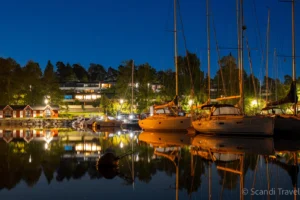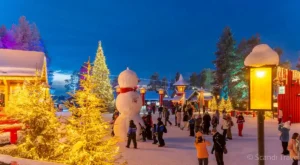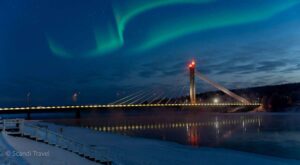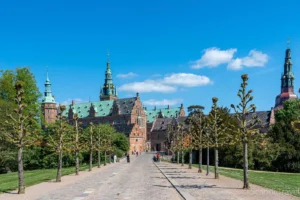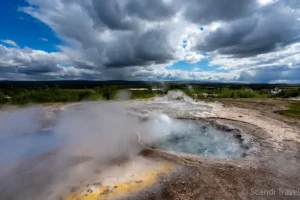Finland is rich in history and culture, and is home to seven UNESCO (United Nations Educational, Scientific, and Cultural Organisation) World Heritage Sites. Any visit to Finland, whether for a week or a month, is not complete without experiencing at least some of these cultural and natural treasures.
- Old Rauma: Rauma harbour is one of the oldest in Finland, and is situated on the Gulf of Bothnia. This old-style Nordic wooden city was built around a Franciscan monastery, and was mostly destroyed by fire in the seventeenth century. Rebuilt, the buildings now date from the eighteenth century. Of particular note are the Old Town Hall from 1776, and the Church of the Holy Cross, a Franciscan monastery church dating from the fifteenth century.
- Petajavesi Old Church: situated in the heart of Finland, this Lutheran country church was built of logs between 1763 and 1765. It mixes Gothic architecture with Renaissance design, and is a very popular place for summer weddings.
- Bronze Age Burial Site of Sammallahdenmaki: this Bronze Age burial site is located in the Lappi municipality, north of Turku. Dating back more than three thousand years, it lies on a remote hill and features thirty six granite burial cairns. One of Scandinavia’s most important Bronze Age sites, it was first excavated in 1891.
- Struve Geodetic Arch: sure to appeal to surveyors and engineers, this chain of survey triangulations stretches from Hammerfest in Norway, through ten nations to the Black Sea. It represents the first accurate measurement of a meridian. It was established by a Russian-German scientist between 1816 and 1855, and today consists of thirty four plaques and obelisks. More information is available at the UNESCO website.
- Suomenlinna Fortress: one of Helsinki’s top tourist attractions, this fortress was built in the late 1700s by the Swedish on a group of islands at the entrance to Helsinki’s harbour. A beautiful site for a picnic, it has a rich military and regal history. Visitor can enjoy the museums and well as Finland’s last surviving submarine.
- Verla Groundwood and Board Mill: this mill and its residential area are a well preserved, outstanding example of pulp, paper, and board industrial small-scale settlements that flourished throughout Europe just over a century ago. This picturesque village is located at Jaala, Kouvola, with a museum dedicated to the village’s history.
- Kvarken Archipelago: located at the narrow point of the Gulf of Bothnia, where the distance between Sweden and Finland is just eighty kilometres, this archipelago consists of over five and a half thousand idyllic islands. The islands feature moraines (rock debris deposited by a glacier), formed by the continental ice sheet melting tens of thousands of years ago.
We highly recommend a day trip to any of these remarkable sites during your stay on Finland. If you’re visiting for a week or two, and are able to go “off the beaten track”, or if you’re in Helsinki for just a short stop on a Baltic cruise, take the time to visit at least one of these sites – you will be very glad you did!

